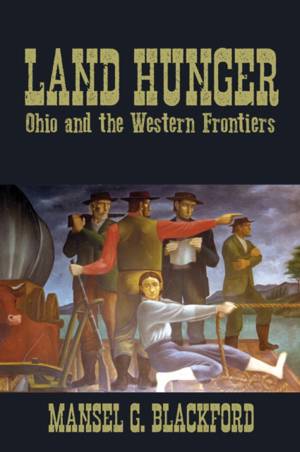
- Afhalen na 1 uur in een winkel met voorraad
- Gratis thuislevering in België vanaf € 30
- Ruim aanbod met 7 miljoen producten
- Afhalen na 1 uur in een winkel met voorraad
- Gratis thuislevering in België vanaf € 30
- Ruim aanbod met 7 miljoen producten
Zoeken
Omschrijving
In Land Hunger, Mansel G. Blackford explores the central role of land use in the experiences of Native Americans, African Americans, and Euro Americans as the new nation expanded westward from Ohio to the Oregon Country. Blackford emphasizes how people adapted to new and changed environments and focuses on key themes related to environmental and frontier studies: the land-use interactions between Native Americans and outsiders, the influence of government policies, and the impact of earlier concepts about the ownership and use of land and water that continue to affect us today in the face of climate change. The first part of the book delves into Euro American and African American settlement in the Ohio Country during the late 1700s and early 1800s. Driven by "Ohio fever" and influenced by a blend of pragmatic, romantic, and capitalistic ideals, tens of thousands crossed the Appalachian Mountains to settle and farm in an unfamiliar land. It was in Ohio and the Midwest that many Americans developed their views on land and the environment, and where the new federal government devised methods for surveying and selling claimed lands. Subsequent chapters analyze how Ohioans and others attempted to apply Midwest-born ideas and practices in the Oregon Country and the Great Plains--regions with significantly different environments--with limited success. Land Hunger defines "frontiers" as zones of interaction between distinct groups of people, offering a broad interpretation of these contested spaces. The book explores how frontiers were depicted in fiction, where their portrayal helped establish their meaning and significance to incoming Americans. Blackford examines diaries, letters, and reminiscences, as well as a broad range of scholarly studies in this historical synthesis.
Specificaties
Betrokkenen
- Auteur(s):
- Uitgeverij:
Inhoud
- Aantal bladzijden:
- 210
- Taal:
- Engels
- Reeks:
Eigenschappen
- Productcode (EAN):
- 9780821426357
- Verschijningsdatum:
- 27/05/2025
- Uitvoering:
- Hardcover
- Formaat:
- Genaaid
- Afmetingen:
- 152 mm x 231 mm
- Gewicht:
- 385 g

Alleen bij Standaard Boekhandel
+ 271 punten op je klantenkaart van Standaard Boekhandel
Beoordelingen
We publiceren alleen reviews die voldoen aan de voorwaarden voor reviews. Bekijk onze voorwaarden voor reviews.








